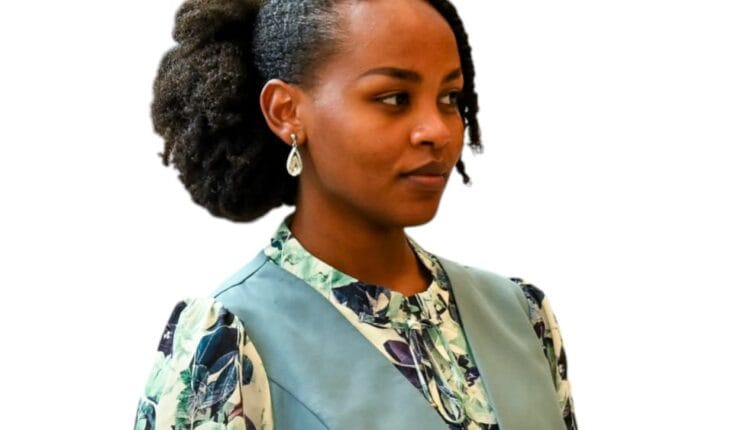By Sally Njoki
I can’t pinpoint exactly when my fascination with hair began. I simply grew up loving my hair and watching the women in my family cherish theirs.
However, there was always a conflicting statement that followed any compliment I received about my hair: “Ni Chem?” (Chem, referring to chemicals— relaxers.)
After years of hearing these remarks, I began to wonder if my hair’s appeal was really due to the relaxers. At the time, I wasn’t aware of the risks associated with them, so I didn’t grasp the concern.
Then came the final blow that shattered my bubble of comfort and ignorance: “Hii si natural, hii ni Chem.”(This isn’t natural hair, this is relaxed hair). Not only was the condition of my hair questioned but so was its authenticity. I couldn’t understand this—after all, it was growing from my scalp. How could it not be natural?
Over the next few years, I skipped my usual retouch appointments and began studying the “growth” emerging from my roots. It was different from the relaxed ends, but both were undeniably my hair.
I quickly noticed changes in texture, porosity, and most obviously—appearance. I was completely enamored with the uniqueness of my hair. After researching natural hair care, I was eager to experiment. I went to the salon for one last adventure: dyeing my hair strawberry blonde.
This further weakened my hair more than I cared to admit, but genetics were still on my side. My hair grew back as fast as the blonde broke off, leaving me with a slightly shorter-than-shoulder-length bob.
I tried deep conditioning, which helped, but my hair was at its weakest—both in length and health. My deep dive into YouTube tutorials and websites on transitioning to natural hair continued until, one day, SNIP SNIP—I just shaved it off.
As I prepared for my first corporate job in corporate Kenya, the question of how to wear my hair became a significant conversation between my mother and me. Being a Naturalista—someone who wears their Afro-textured hair proudly—wasn’t exactly the image associated with corporate employees.
“Where will you find the time? You’ll attract too much attention as a new employee,” my mother said. I knew these comments came from a conservative place but honestly, I caved. On day one, I slicked my hair back into a low ponytail. Very Demure! Very Mindful! But here’s the plot twist—my lady bosses were thriving with natural hair in all sorts of styles! The satisfaction I felt seeing the Heads of Finance,
Human Resources and Corporate Affairs and more boldly flaunting their natural curls? Priceless!
As the months passed, I often found myself in casual office conversations, especially in the kitchen. The same questions would pop up: “Do you style your hair every morning?” “What products do you use?”
“What are you mixed with?” I would explain that yes, I do style my hair every day, I use familiar products, and no, I am not mixed.
These conversations revealed specific challenges associated with the natural hair journey. I can confidently say that space has been created for those who choose the natural route—even our Lady Justice herself is proof.
Yet, the challenge remains a fundamental understanding of Afro hair. Topics such as hair porosity, hair typing, product selection, moisture, and hydration are essential for proper hair care, though often overlooked. Choosing to go natural is a decision I renew every single day. It’s not easy, especially if your hair is type 4C—the thickest and coiliest.

It takes patience and a whole lot of self-love. Not everyone will understand your journey, and some may even share their disapproving thoughts.
At this point, your resolve to remain natural will keep you going, along with a community of like-minded individuals.
In an article by Fortune Business Insights (August 12, 2024), the global hair care market was valued at USD 99.52 billion in 2023 and is projected to grow to USD 213.47 billion by 2032, with a CAGR of 10.4% (Anon., n.d.).
In Kenya, the hair care market is expected to generate USD 0.57 billion in 2024, with a 7.10% annual growth rate from 2024 to 2028 (Statista).
This highlights the financial impact of the hair market and the necessity of being informed about natural hair care—knowing which products are essential and which aren’t.
I continue to pursue my passion for a more customer-led hair care industry, where stylists possess the scientific knowledge to manage Afro-textured hair.
I envision beauty spa days that begin with consultations from trained hair professionals, ensuring healthy hair and scalp routines that leave us feeling rejuvenated.
Read also:- Jane Karuku appointed KAM Chairperson for two years
As a corporate baddie, I strive to make space for fellow textured-hair individuals, hoping that our love for natural hair drives us to keep learning and discovering what works best for us.
Sally with the good hair.
Corporate Gen Z and Afro-Hair Coach,
Instagram: – @_sallywiththegoodhair
Facebook:- @_sallywiththegoodhair


